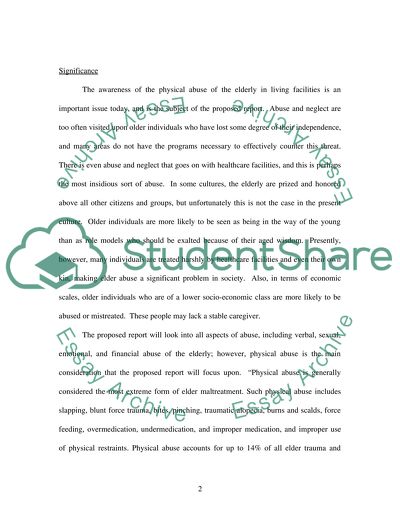Cite this document
(The Awareness of the Physical Abuse of the Elderly in Living Research Proposal, n.d.)
The Awareness of the Physical Abuse of the Elderly in Living Research Proposal. Retrieved from https://studentshare.org/social-science/1564017-the-awareness-of-the-physical-abuse-of-the-elderly-in-living-facilities
The Awareness of the Physical Abuse of the Elderly in Living Research Proposal. Retrieved from https://studentshare.org/social-science/1564017-the-awareness-of-the-physical-abuse-of-the-elderly-in-living-facilities
(The Awareness of the Physical Abuse of the Elderly in Living Research Proposal)
The Awareness of the Physical Abuse of the Elderly in Living Research Proposal. https://studentshare.org/social-science/1564017-the-awareness-of-the-physical-abuse-of-the-elderly-in-living-facilities.
The Awareness of the Physical Abuse of the Elderly in Living Research Proposal. https://studentshare.org/social-science/1564017-the-awareness-of-the-physical-abuse-of-the-elderly-in-living-facilities.
“The Awareness of the Physical Abuse of the Elderly in Living Research Proposal”, n.d. https://studentshare.org/social-science/1564017-the-awareness-of-the-physical-abuse-of-the-elderly-in-living-facilities.


